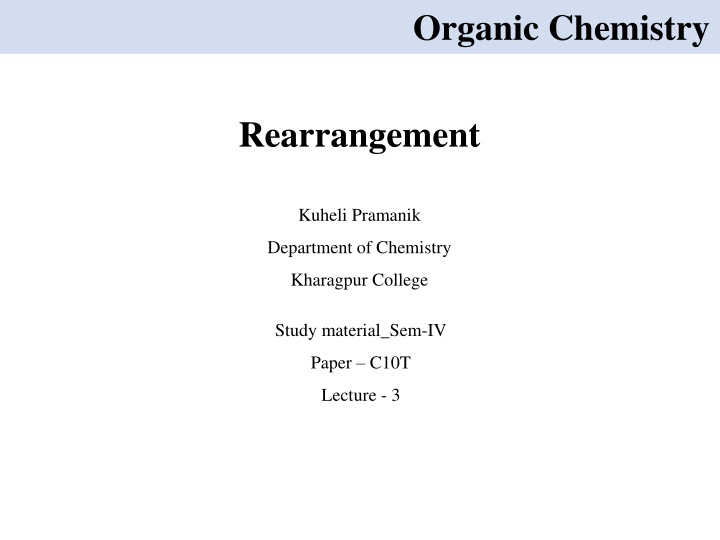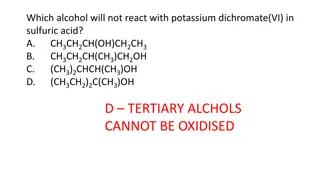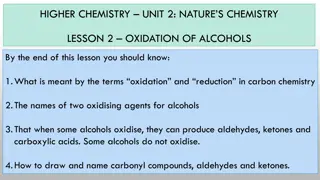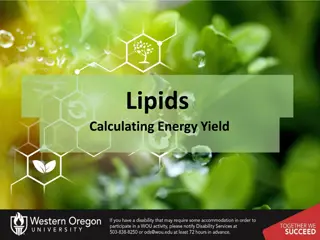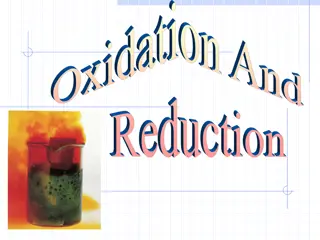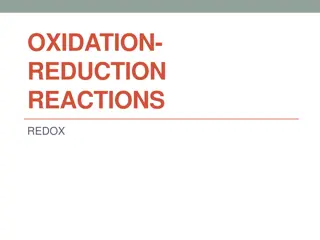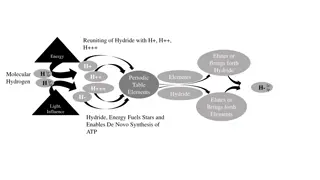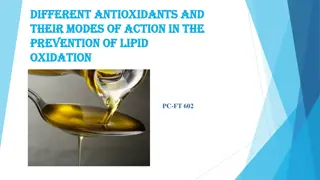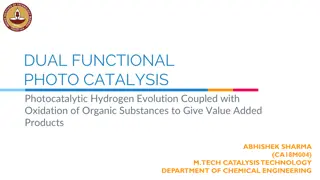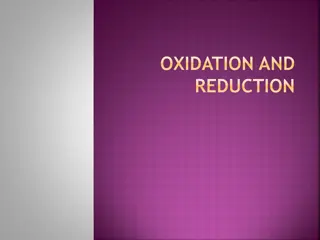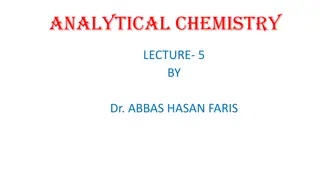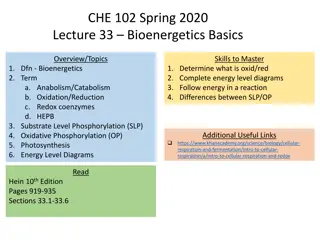Baeyer-Villiger Oxidation: Mechanism and Migration Aptitude
The Baeyer-Villiger oxidation is a key organic reaction that transforms ketones into esters or cyclic ketones into lactones using peroxyacids. The mechanism involves protonation of the carbonyl group and migration of substituents. Migration aptitude in this reaction determines the regioselectivity, with tertiary groups having the highest migrating aptitude. Understanding the migration patterns is crucial for predicting product formation in this reaction.
Download Presentation

Please find below an Image/Link to download the presentation.
The content on the website is provided AS IS for your information and personal use only. It may not be sold, licensed, or shared on other websites without obtaining consent from the author.If you encounter any issues during the download, it is possible that the publisher has removed the file from their server.
You are allowed to download the files provided on this website for personal or commercial use, subject to the condition that they are used lawfully. All files are the property of their respective owners.
The content on the website is provided AS IS for your information and personal use only. It may not be sold, licensed, or shared on other websites without obtaining consent from the author.
E N D
Presentation Transcript
Organic Chemistry Rearrangement Kuheli Pramanik Department of Chemistry Kharagpur College Study material_Sem-IV Paper C10T Lecture - 3
BaeyerVilliger oxidation The Baeyer Villiger oxidation is an organic reaction that forms an ester from a ketone or a lactone from a cyclic ketone, using peroxyacids or peroxides as the oxidant. The reaction is named after Adolf von Baeyer and Victor Villiger who first reported the reaction in 1899.
Mechanism In the first step of the reaction mechanism, the peroxyacid protonates the oxygen of the carbonyl group. This makes the carbonyl group more susceptible to be attacked by the peroxyacid. Next, the peroxyacid attacks the carbon of the carbonyl group. Through a concerted mechanism, one of the substituents on the ketone migrates to the oxygen of the peroxide group while a carboxylic acid leaves. This migration step is thought to be the rate determining step. Finally, deprotonation of the oxocarbenium ion produces the ester.
Migration aptitude In presence of two different types of migrating groups, which group will migrate? One example gives the following result R group Migration of Ph group -R = Yield Yield -Me 90 0 -Et 87 6 -iPr 33 63 -tBu 2 77 The result shows that tBu has the highest migrating aptitude than iPr than Et and Me. This is roughly follows the stabilizing power of the group to a positive charge. Hence the migration order for alkyl group follows as tertiary > secondary > aryl > primary. Electron-withdrawing groups on the substituent decrease the rate of migration
Migration aptitude Due to the difference in migration aptitude, Bayer-Villiger reaction is regioselective L-Dopa drug for the treatment of Parkinson disease Thus following order for migration of substituted aromatic rings was found
Migration aptitude The Reason There are two explanations for this trend in migration ability. One explanation relies on the buildup of positive charge in the transition state. So, the substituent that can stabilize the positive charge best, would be most likely to migrate. The higher the degree of substitution, the more stable a carbocation generally is. Therefore, the tertiary > secondary > primary trend is observed. The + charge in the T.S. is most stabilized by i-propyl group than methyl group. Hence isopropyl group favours migration than methyl group.
Migration aptitude The Reason Another explanation uses stereoelectronic effects and steric arguments. The substituent that is antiperiplanar to the peroxide group in the transition state will migrate. This transition state has a gauche interaction between the peroxyacid and the non-migrating substituent. If the bulkier group is placed antiperiplanar to the peroxide group, the gauche interaction will be reduced. Thus, the bulkier group will prefer to be antiperiplanar to the peroxide group, enhancing its aptitude for migration.
Examples The reaction proceeds through Bayer-Villiger pathway, where Ph migrates over Me group, as Ph can stabilize the + charge more efficiently than Me group If -Ph group migrates, the + charge will be destabilize by the CO2Et group. Ph group can t stabilize the intermediate due to lack of conjugation If CO2Et group migrates, the + charge will be stabilize by the Ph group.
Examples The oxidation is extremely sensitive to steric and structural effects, as shown below. In the first two examples reaction only one product as per expectation. But in the last example both products are obtained. Few more examples are given below Retention of stereochemistry
CF3CO3H is generally the reagent of choice because the reactions with this reagent is very fast, gives very high yield of product. However this per acid sometimes gives some complications as a result of trans esterification, which takes place between the ester formed and the trifluoroacetic acid. In order to avoid the complications, buffer such as Na2HPO4 is used in the reaction, which reacts with the trifluoroacetic acid to form a salt, hence minimize the chance of esterification.
